2011 GM HD Trucks - Click above for high-res image gallery
Usually whenever we head out to a new vehicle press launch, we have to sit through exhaustive technical and marketing presentations before we get a chance to climb behind the wheel. However, General Motors put us straight into a dual-rear wheel GMC Sierra 3500 crew-cab diesel upon our arrival in Baltimore. On the docket? A 130-mile trek from Baltimore airport to Rocky Gap Lodge in the Allegheny mountains of western Maryland with Vehicle Line Executive Rick Spina sitting shotgun.
We actually appreciated this 'backwards' approach, because it gave us the opportunity to develop some 'gut' impressions of these new trucks even before we got the attendant sales pitch. For a two-hour, mostly highway jaunt, the duallie SLT proved to be a surprisingly amiable companion, but it was just the first of seven different trucks we would drive over the next couple of days. Read on past the jump find out what GM's new heavy duty trucks are like when sampled in a range of real-world conditions.
Photos by Sam Abuelsamid, Chris Paukert / Copyright ©2010 Weblogs, Inc.
The SLT trim level on our first Sierra brought with it leather seats and steering wheel, navigation, power-adjustable pedals and just about everything else you can think of. The first thing we noticed is how quiet the Duramax diesel has become. The true degree of that silence wouldn't become fully apparent until the next day when we drove the Vortec-powered GMC Denali, but this certainly isn't the kind of bucket-of-bolts diesel we've become accustomed to when sitting next to them at traffic lights.
It wasn't just the engine that was quiet, everything about the cabin was very subdued. Of course, it's no Lexus LS, but especially considering how high up we were sitting on big truck tires, it was very impressive. Even with the barn-door sized towing mirrors, wind noise was kept to a minimum, and at highway speeds, conversations without raised voices were never a problem. Beyond the quiet, the crew cab was exactly that – with second-row seat room big enough to accommodate three adults in comfort. And for those times when extra protected storage was required, the rear seat cushions flipped up to provide a flat load floor.
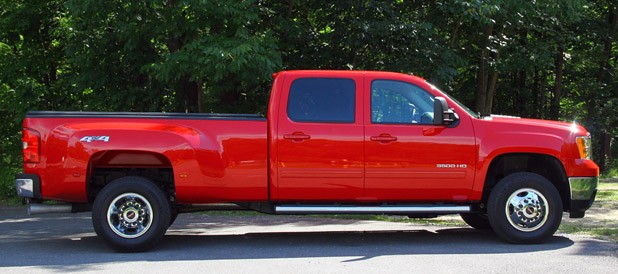
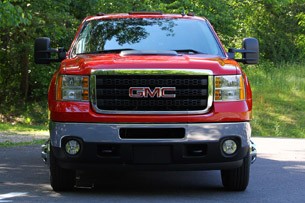
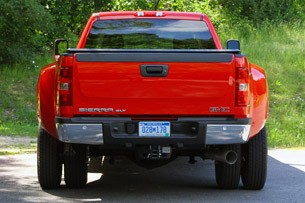
The single most impressive aspect of the Sierra 3500 on that first drive was its ride quality. This one-ton truck had no load in the back, which in the past would have meant bouncing around on every expansion joint and bump. The roads in Maryland are certainly smoother than what we have to deal with back in Michigan, but the GMC was nonetheless a serene operator. With a curb weight of 7,387 pounds, the Sierra was also surprisingly quick, thanks to its 397 horsepower and 765 pound-feet of diesel torque. Past criticisms we've leveled at GM HD pickups with Allison transmissions included rough shifts and noisy gears, both of which have been addressed in this latest iteration. Seamless gear changes even under hard acceleration are now part of the HD's MO.
The next day, the skies opened up as we started off in a Vortec-powered single-rear-wheel crew-cab Denali heading further west into the Allegheny mountains where we we would dip into West Virginia. Like other Denali models, the HD gets the usual perforated chrome grille, chrome bumpers and door handles and brushed aluminum interior trim for a little added flash. The Vortec was decidedly louder than the diesel, although actually in a very good way. The small-block V8 engine has the roar that we've come to know and love since time immemorial. Considering how quiet the rest of the truck is, the engine sound actually seems almost of out place, but we're not going to complain.
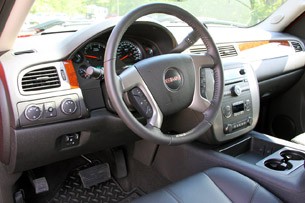
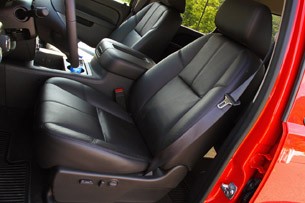
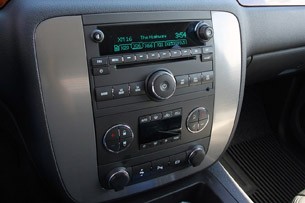
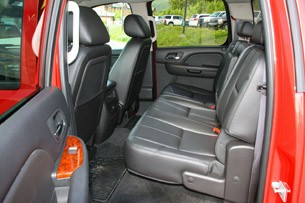
Like the duallie we drove the day before, the Denali was unloaded, and as we got further up into the mountains, the road surface quality worsened considerably even as it became more serpentine. Nonetheless, the GMC handled anything we threw at it with genuine pluck. We managed to trigger the ABS and stability control on wet pavement several times, and unlike past experiences with, say, the Toyota Tundra, the Sierra just tracked right where we pointed it. Even when we hit some mid-corner rough stuff, the rear end never once stepped out on us. Who would have thought a big truck could handle so well?
In addition to a bouncy ride and spongy brakes, the bad old days of heavy duty pickup dynamics had us expecting sloppy, overboosted steering. Thankfully, the days of being able to wiggle the steering wheel 5-10 degrees off-center with no real response are over at GM and Ford. The Generals have a new larger recirculating ball steering gear, which, in tandem with the improved contact patch control of the revised front suspension, results in steering response that's better than some cars we've driven. The GM trucks offered no disconcerting slack zones in the steering and actually provided pretty decent feedback as the cornering forces built while driving through the mountains. Our only complaint was that the effort felt a bit light at low speeds, but it firmed up nicely at higher velocities.
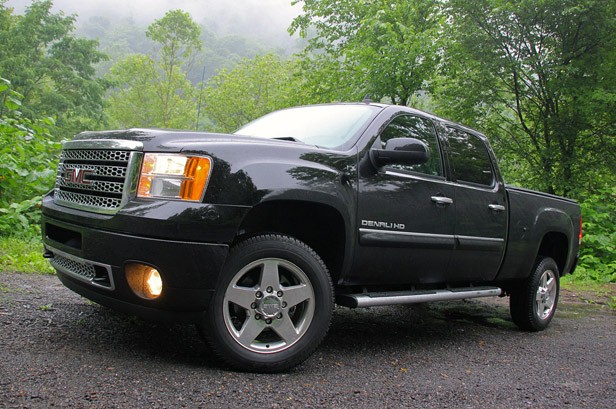
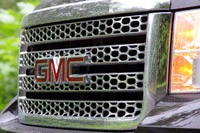
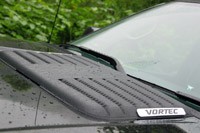
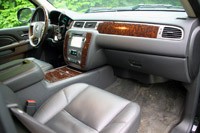
At our first vehicle swap point, we grabbed a Sierra 2500 crew cab, with a 35-foot-long, 9,000 pound (empty) travel trailer hanging off the hitch. After a quick primer from engineer Brent Deep on how to maneuver nearly 60 feet and over 16,000 pounds of truck and trailer, we headed out. Our tow truck was again powered by the diesel, and even with all that mass to drag around, the engine never felt strained, even though our drive route contained several extended grades of seven to eight percent. After getting used to checking the spotter mirrors to make sure we didn't clip any curbs or cross center lines, we set the cruise control at the 55-mile-per-hour limit and let the truck go to see how well the new smart exhaust brake worked. In short, it was brilliant.
As the truck crested a hill and headed down, the speed would creep up by about 2 mph, which triggered the transmission to downshift and the turbo control to kick in. From there, our velocity was held in check with our set speed all the way down the hill without any intervention on our part. The first couple of times we used the system, we hovered our foot over the brake pedal just in case, but once we were confident the system worked, we just put our foot down and let the truck do the work. The beauty of this system is that it works entirely without applying the brakes. Now, if GM would just add radar-based adaptive cruise control and integrate the turbo and transmission control to provide primary deceleration in addition to braking, this system would be near perfect. You could follow traffic, maintaining a safe distance without using the brakes most of the time.
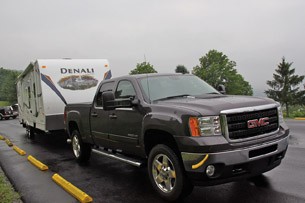
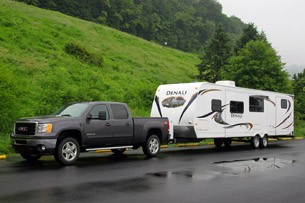
Even when you do have to use the brakes, the newly solid pedal feel makes modulation a breeze. The most important benefit of all this is the confidence it inspires while driving with either a payload or a trailer. Towing in hilly terrain is now possible with much less concern about using up all of the brakes prematurely, leaving drivers to focus more on where the truck and trailer are on the road.
After lunch, we switched to a crew cab Chevy Silverado 2500 with 3,000 pounds of ballast in the bed. Frankly, the big Duramax barely noticed the 1.5 tons worth of steel, seemingly accelerating just as effortlessly as the unloaded trucks did. Going around corners, the extra mass manifested itself as added inertia resisting directional changes, but it did help to dampen vertical motions even more than the unloaded truck. Another factor contributing to the comfortable ride, even in the work-truck variants like this one, is the use of two hydraulic body mounts at the rear of the cab. The front end is tied down with traditional rubber mounts, but the hydraulic units out back give the engineers more latitude to tune motions in several directions and focus on specific frequencies that are annoying to passengers.
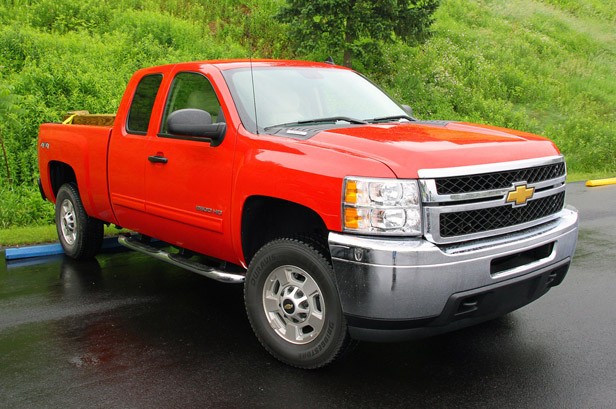
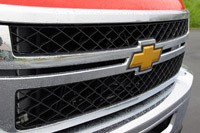
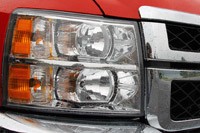
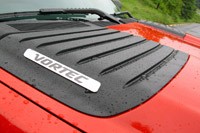
After our return to Rocky Gap, the trucks were available with their Ford and Ram rivals for back-to-back comparisons over a shorter loop. Only one Ram 3500 was available, and it was unloaded. Our gut reaction? If you prefer old-fashioned, sloppy truck steering, this is your ride, as it has plenty of free play just off-center and it's overboosted effort everywhere.
Of the two Super Duty F-350s, one was loaded with 3,000 pounds of ballast and the other was towing a trailer identical to the one hooked to the GM truck we sampled earlier. The first thing we immediately noticed was that the new 6.7-liter Scorpion diesel is simply not as refined as the Duramax. It produces plenty of power and torque, but at light accelerator applications, it still exhibits some of the traditional clatter traditionally associated with diesels. Put your foot into it at more than about 35-40 percent throttle (yes, we know a diesel has no throttle) and it settles down nicely into a similar growl to the Duramax. Since this is an all-new engine, perhaps the Blue Oval's engineers are still coming to grips with tuning it.
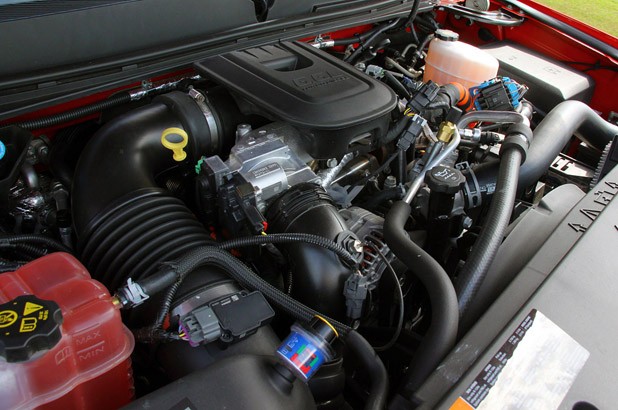
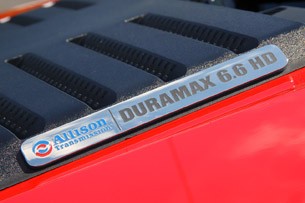
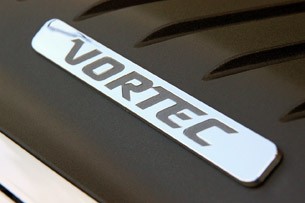
The other big difference we noticed with the Ford was in the area of ride comfort, which is clearly inferior to the Sierrado twins. Parts of the drive loop included some small, medium frequency waves that were noticeable but not intrusive in the Sierra. The Ford, on the other hand, felt jiggly over these same surfaces, even with 3,000 pounds of ballast in the bed. The Ford's steering was just as slop-free as the GM trucks, but on the demerit side, it felt distinctly overboosted.
We took out the Sierra and F-350 with identical trailers for some side-by-side testing on the short loop. While the Ford has exhaust-gas braking, it is of the traditional on-off variety rather than the variable control setup used by GM. Ford confirmed to us that there is no turbocharger control currently implemented in its tow-haul mode. The result is that while the system slows the vehicle on downhill grades, speeds can creep up unless you apply the brakes.
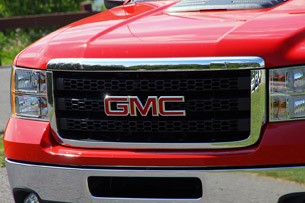
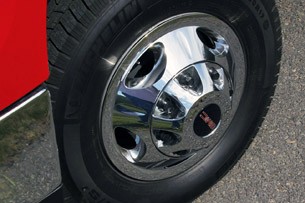

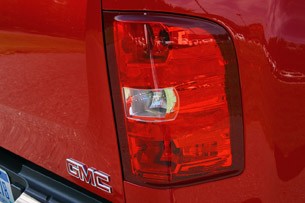
When accelerating, the Scorpion doesn't feel as brawny as the Duramax, even though the GM diesel only has a 7-horsepower and 30 pound-feet of torque advantage. Seizing the opportunity, we grabbed some of our colleagues and lined up the Sierra and F-350 (both with 9,000-pound trailers) for an informal drag race. The Ford did get an initial jump on the GMC, but then the Sierra quickly caught up and pulled away. Some seemed to think that Ford might be doing some torque limiting with its engine, perhaps to protect the transmission. Whatever the case, the GMC offered better performance both uphill and down.
For our final drive stint, we returned to a single-rear-wheel Sierra 3500 crew-cab with a 3,000-pound payload for the return run to Baltimore's airport. This time, we reset the fuel economy readout in the trip computer, and in deference to the large population of eagle-eyed Maryland state troopers, we set the cruise control to the state mandated limit of 65 mph. Over the next 133 miles through the Allegheny mountains and then into the flatter area near the city, we rarely touched the accelerator or brake except when stuck behind a semi. The cruise control maintained a steady speed over hill and dale and we made no attempt to optimize our mileage. As we rolled into our destination, the readout in the instrument cluster read a very impressive 19.8-mpg average for the diesel V8 – not bad for nearly 11,000 pounds of truck.
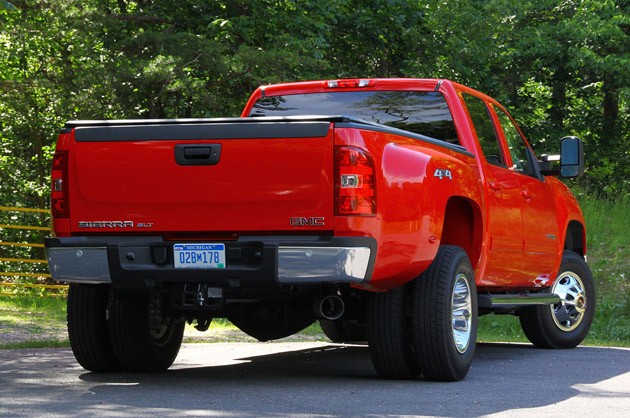
As you might expect, these GM heavy-duty trucks are not inexpensive, with pricing starting at about $28,000 and easily running over $60,000 when loaded up with all the toys. Of course, we've been in some gussied-up half-ton pickups whose Monroneys breech 50k, and given all that these HDs are capable of, we don't find the bottom line off-putting. Besides, people generally buy HD trucks because they need them – very few are purchased as lifestyle vehicles. As Chevy truck marketing manager Tony Truelove tells it, this is the "most expensive tool" in an operator's kit.
In terms of raw capabilities, these new GM trucks edge the Fords in most categories, but not by any amount big enough to be truly meaningful. For example a towing capacity of 21,700 pounds vs 21,600 for the Ford is not likely to sway a buyer one way or the other. What may tilt the scales toward GM, however, is its superior ride quality, engine refinement and features like smart exhaust braking. We suspect anyone who needs this kind of truck is unlikely to be disappointed by either of these leaders, but they might find themselves feeling a bit more refreshed after an extended stint in a Sierra or Silverado HD. In the gritty world of long distance heavy hauling, that's perhaps a luxury worth more than any other.
Photos by Sam Abuelsamid, Chris Paukert / Copyright ©2010 Weblogs, Inc.
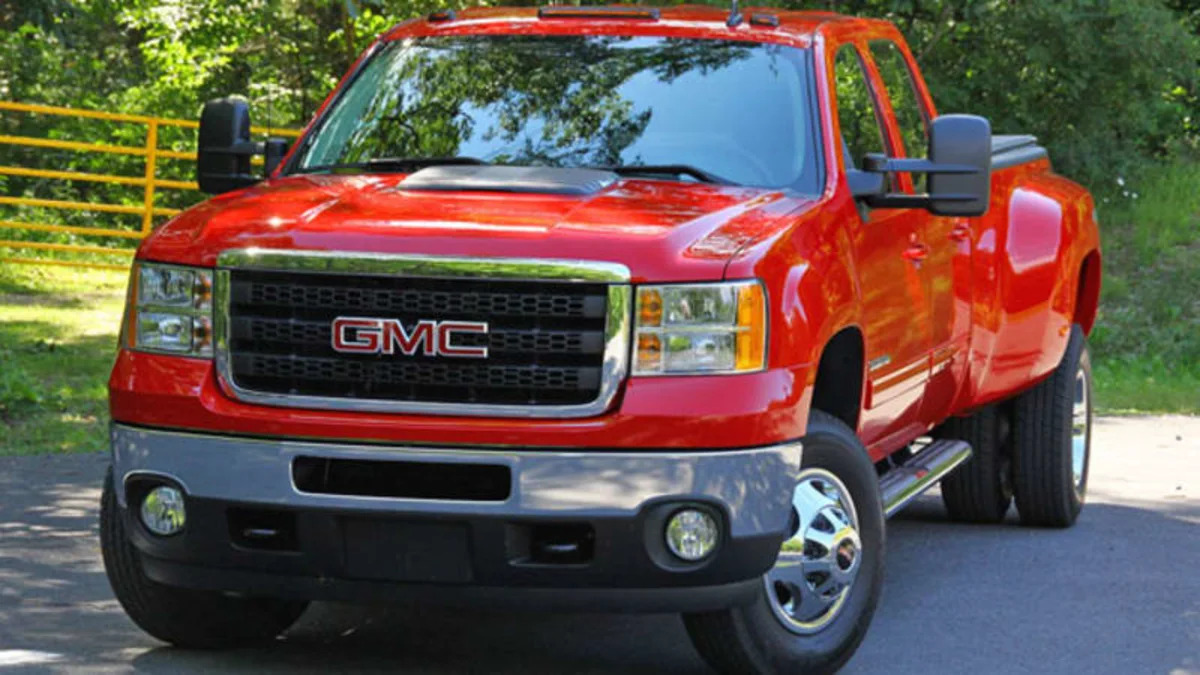


Sign in to post
Please sign in to leave a comment.
Continue